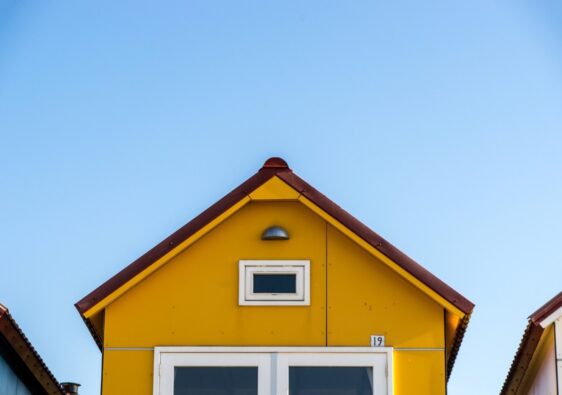Regular maintenance is key to keeping your plumbing in good shape.
But how can you keep track of what needs doing? You make a plumbing maintenance checklist!
Below is a list of 10 essential tasks that will help you prevent plumbing problems before they start. There’s no need for plumbing experience too – these tips are easy for anyone to follow.
Read on to learn more!
1. Check Faucet Leaks
Faucet leaks might seem small, but they can waste a lot of water over time. Not to mention, they can also increase your water bill.
So, how do you check for these leaks? It’s easy! Look around the base of your faucets for water. While you’re there, listen closely for any dripping sounds.
You can also check under your sinks for puddles or damp spots. If you find any, it means that there is a leak. The sooner you catch these leaks, the easier they are to fix!
2. Inspect Pipe Insulation
Pipe insulation is important, especially for pipes in colder parts of your house. No one wants their pipes to freeze in the winter!
To check your pipe insulation, first find the pipes in your basement, attic, or garage. Look at the insulation (the soft covering around your pipes). It should completely cover the pipes without any gaps.
If you see any spots where the insulation is missing or torn, you will need to replace it. Good insulation can save you from costly repairs down the line!
3. Flush Water Heater
Flushing your water heater is a simple but important task. It takes away the build-up of minerals in your heater. This build-up can cause your heater to work harder than it needs to.
To start, turn off the heater and let it cool. Then, connect a hose to the drain valve. Open the valve and let the water flow into a bucket or down a drain.
When the water is clear, close the valve. That’s it! Now your water heater can work at its best again.
4. Clear Clogged Drains
Clogged drains can be a real pain. They can cause water to back up and make a mess in your home. It’s easy to avoid this, though!
Once a week, try pouring a mix of half a cup of baking soda followed by half a cup of vinegar down your drains. Let it sit for about 15 minutes, then rinse it down with hot water.
This simple, natural mixture works wonders in keeping your drains clear and free of unwanted blockages. You might want to try this first and find kitchen plumbing services in Jackson if issues persist.
5. Test Sump Pump
Testing your sump pump is crucial to avoid flooding, especially during wet seasons. You can test it easily! To start, pour a few buckets of water into the sump pit.
The pump should start running, and it will drain the water quickly if it’s working well. If the pump doesn’t start or the water drains slowly, get help from plumbing maintenance services.
By testing your sump pump regularly, you can prevent water damage in your home. Remember, it’s better to identify problems early than deal with a flood later!
6. Examine Toilet Seals
Toilet seals play a key role in keeping your bathroom clean and hygienic. To check them, first look around the base of your toilet.
If you see water, it could mean that your seal is leaking. Also, do a smell check. If you notice any unpleasant odors, that might be a sign of a broken seal.
Another way to check is to give your toilet a little wiggle. If it moves, your seal may need replacing. Keeping on top of these checks will help you avoid major issues later on!
7. Monitor Water Pressure
Water pressure is key for a good shower and efficient appliances. Too high or too low, and you might have problems. Too high can damage your pipes; too low can affect your shower and appliance use.
To check it, get a water pressure gauge from a local store. Screw it onto an outside spigot and turn the water on.
The gauge will tell you the pressure. It should be between 40 and 85 psi. If it’s not, you may need a plumber’s help.
8. Inspect Hose Bibs
Hose bibs are the outdoor faucets where you connect your garden hoses. It’s smart to check these for leaks, especially after winter. Any freezing and thawing can cause cracks.
To check, turn on the water. If you see water dripping from the faucet or pooling on the ground, you likely have a leak problem.
It’s best to fix it right away. Dealing with leaks early can save you money and avoid bigger problems later.
9. Clean Gutters
Gutters direct rain away from your home. If they’re blocked with leaves or debris, water could end up in your home, causing damage.
To clean them, grab a ladder and a bucket. Be sure to put on gloves to protect your hands.
Climb up the ladder and scoop out any debris in the gutters. Work your way around your house until all gutters are clean. Keep in mind that it’s easier to clean gutters now than to fix water damage later!
10. Evaluate Septic System
Your septic system is another crucial part of your plumbing system. It handles all the waste from your house. Like other parts, it also needs regular checks.
Make sure to schedule a professional plumbing inspection every three years. Also, you should have your septic tank pumped every three to five years.
Between inspections, watch out for signs of problems. Things like bad smells, slow drains, and lush, green grass over the drainfield can hint at problems. Fixing them early can save you a lot of money and trouble!
Must-Do Plumbing Maintenance Checklist Before Your Next Move
Creating a comprehensive plumbing maintenance checklist can save you time, money, and headaches. By doing these tasks regularly, you can prevent major plumbing issues and ensure the smooth functioning of your household.
So don’t wait until something goes wrong. Create your checklist now and make plumbing maintenance a priority in your home!
We hope you found this article helpful. Keep reading our blog for more helpful tips and advice.



